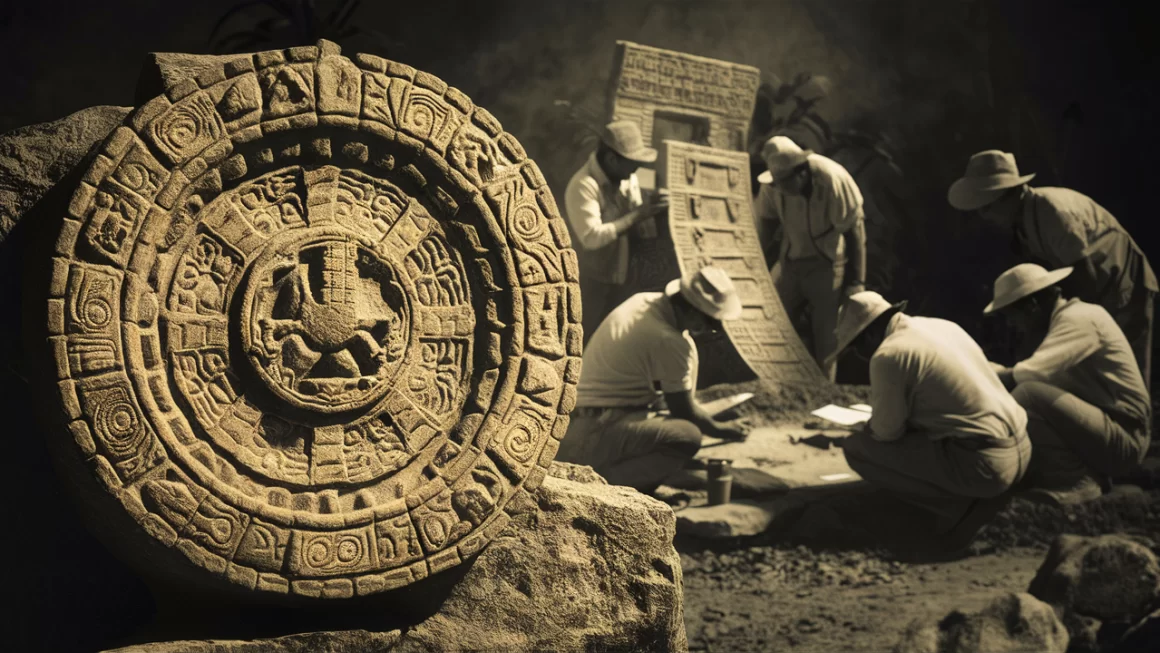Aztec Technology has always fascinated historians and enthusiasts alike. The Aztecs were truly ahead of their time, from their impressive architecture to their advanced agricultural techniques. In this article, we will explore the incredible innovations of Aztec Technology. You’ll learn about their engineering feats, their use of natural resources, and how their advancements have impacted modern society.
The Ingenious Engineering of the Aztecs

Aztec Technology in engineering was nothing short of remarkable. Their ability to construct grand structures with limited tools is a testament to their ingenuity.
The Construction of Tenochtitlán
Tenochtitlán, the capital city of the Aztecs, was a marvel of Aztec Technology. Built on a series of small islands in Lake Texcoco, the city’s layout was meticulously planned. The Aztecs used a technique called chinampas to create fertile land for agriculture. This method involved piling mud and vegetation on rafts, which would then take root and become permanent land.
The city’s design included wide causeways, canals, and impressive temples. The Great Pyramid of Tenochtitlán, known as the Templo Mayor, stood as a centerpiece and showcased the Aztecs’ architectural prowess.
Aqueducts and Water Management
Water management was a crucial aspect of Aztec Technology. The Aztecs built sophisticated aqueducts to bring fresh water from distant sources to their cities. These aqueducts were made from stone and clay, demonstrating their advanced understanding of materials and engineering.
In addition to aqueducts, the Aztecs constructed dikes and canals to control water levels and prevent flooding. This system allowed them to maintain a stable water supply and support their agricultural needs.
Agricultural Innovations

Aztec agriculture technology enabled them to sustain a large and growing population. Their farming techniques were both efficient and sustainable.
Chinampas: Floating Gardens
One of the most famous innovations of Aztec Technology is the chinampa system. Planting mud, plants, and other organic materials on woven reed mats created these floating gardens. The mats were anchored to the lakebed with willow trees, building stable and fertile plots of land.
Chinampas allowed the Aztecs to maximize their agricultural output. They could grow yearly crops, including maize, beans, squash, and tomatoes. This technique not only provided food but also contributed to the ecological balance of the region.
Terracing and Crop Rotation
The Aztecs also used terracing and crop rotation to enhance their agricultural productivity. Terracing involved creating stepped levels on hillsides, which helped prevent soil erosion and allowed for efficient water use. Crop rotation ensured that the soil remained fertile by alternating the types of crops grown in each plot.
These methods exemplify how Aztec Technology promoted sustainability and resourcefulness in farming.
The Use of Natural Resources
Aztec Technology extended to the effective use of natural resources. They were skilled at extracting and utilizing materials from their environment.
Obsidian Tools and Weapons
Obsidian, a volcanic glass, was highly valued in Aztec Technology. The Aztecs used it to craft tools and weapons, such as knives, spearheads, and arrowheads. Obsidian blades were sharper than steel and were used for various purposes, from everyday tasks to ceremonial sacrifices.
The ability to work with obsidian highlights the Aztecs’ expertise in material sciences and their innovative spirit.
Herbal Medicine
Aztec Technology also encompassed advances in medicine. The Aztecs had a deep knowledge of medicinal plants and their properties. They used herbs to treat various ailments, from minor wounds to severe illnesses.
Their use of natural remedies, such as aloe vera for burns or cacao for energy, shows their profound understanding of the natural world.
Artistic and Cultural Contributions
Aztec Technology wasn’t limited to practical applications; it also significantly influenced their artistic and cultural expressions.
Stone Carvings and Sculptures
The Aztecs were masterful stone carvers. They created intricate sculptures and carvings that depicted gods, animals, and scenes from daily life. These works of art were beautiful and served religious and ceremonial purposes.
The precision and detail in these carvings reflect the sophistication of Aztec Technology in the arts.
Codices and Writing
The Aztecs developed a complex system of writing using pictographs and ideographs. These symbols were recorded in codices, books made from bark paper, or deerskin. These codices contained valuable information about Aztec history, culture, and knowledge.
The creation of codices illustrates how Aztec Technology was used to preserve and transmit knowledge across generations.
The Legacy of Aztec Technology
The impact of Aztec Technology can still be seen today. Their innovations have influenced various fields and continue to inspire modern advancements.
Influence on Modern Agriculture
Modern agriculturalists seeking sustainable farming solutions have studied and adapted techniques like chinampas and terracing. These methods offer valuable insights into resource management and ecological balance.
Engineering and Urban Planning
The engineering marvels of the Aztecs, such as their aqueducts and city planning, have inspired modern engineers and urban planners. The principles behind their designs are applied in contemporary projects to create efficient and sustainable urban environments.
Also Read: Tech eTrueSports: Unleashing the Exciting Future of Gaming
Final Thoughts
Aztec Technology has left an indelible mark on history. From their ingenious engineering feats to sustainable agricultural practices, the Aztecs demonstrated a profound understanding of their environment and resources. Their legacy continues to influence and inspire modern technology and practices.
In this article, we explored the astonishing innovations of Aztec Technology. Its impact on various aspects of life, from engineering to agriculture, is a testament to the ingenuity and resourcefulness of the Aztecs. As we look to the future, the lessons from Aztec Technology will continue to guide and inform our advancements.
By understanding and appreciating Aztec Technology, we gain valuable insights into the past and the potential for future innovations. The Aztecs’ ability to create, adapt, and thrive in their environment is a powerful example of human ingenuity and resilience. Their contributions to technology and society remain inspiring and inspiring for generations.




